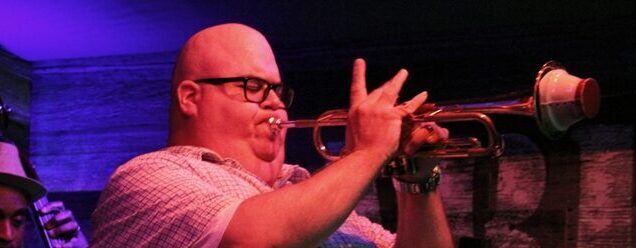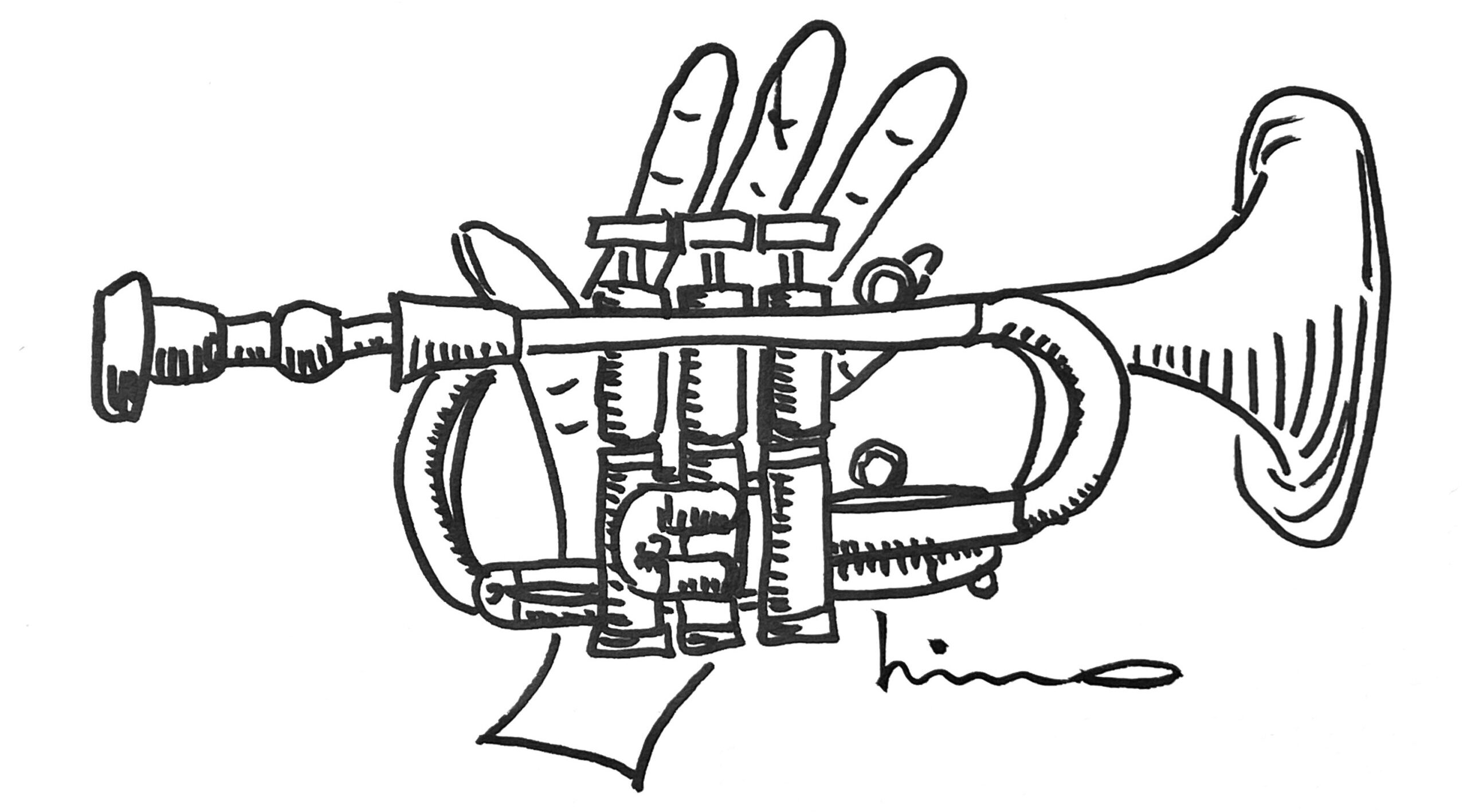Warm Up/Embouchure Building Routine This is a systematic approach to building the embouchure. This routine helps develop one's sound, strength, range and endurance. The exercises covered below may seem simple, but a strong embouchure is built through diligent practice of the basics: long tones, lip slurs and the co-ordination of the air- stream. There are no short cuts to improving one's range, but by following this basic routine, results can be seen immediately. Remember, the most important quality of one's musicianship, is TONE. Fluttering (Bobby Shew) Begin with the light fluttering of the lips. This stimulates the blood flow to the embouchure & allows the player to "warm up" before he puts the horn on his face. The idea is for the musician to re-create that thick, full, tingly feeling in the embouchure that one has when everything is working at its best. The amount of time needed varies, but it can take anywhere from 2-5 minutes in most cases. Important note: Remember to flutter lightly each time the horn comes off your face. This re-vitalizes the embouchure and aids greatly in endurance by maintaining a thick, full embouchure. Free Buzzing (Bobby Shew) Start with short staccato bursts to center buzzing, any pitch in the middle register Do a few longer, sustained tones, any pitch in the middle register Buzz 5 to 15 times a day for 30 to 60 seconds Always flutter before and after each session Mouthpiece Buzzing To center the embouchure and re-establish that "good feeling" before playing the trumpet. The idea is to create a good, clean, full buzz. See James Stamp Warm-up #3 Long Tones (James Stamp/Vincent Cichowicz) Focus your concentration exclusively on your tone. Listen closely to yourself as you hold each note and strive for beauty. Try to achieve what you feel is the "ideal sound". This "ideal sound" depends on the individual and can be influenced by any number of sources (i.e.:Freddie Hubbard, Bud Herseth, Conrad Gozzo, Maurice Andre, Wynton Marsalis or Maynard Ferguson). See Stamp or Cichowicz James Stamp: Warm Ups and Studies For Trumpet Stamp Warm-up #3 Play first 5 lines on mouthpiece, then on trumpet Malcolm McNab Video Lesson Malcolm McNab Video Lesson Vincent Cichowicz: Flow Studies Cichowicz Flow Studies #1 - 5 with Lip Bends ala Michael Sachs (Cleveland Orchestra) Lip Slurs (Arban & Irons) Play softly and evenly, use a metronome and start slowly for even slurs Make "Slots" Click or Pop Intensity to your air stream, shooting it out of your lungs. Bobby Shew calls it "Forced Exhalation" Focus on velocity determining the pitch (faster air as you ascend) Instantaneous change to the next level of air speed Air Pivoting is essential to align airstream to mouthpiece throat Tongue Position: Low C (TOE), Middle G (TU), Top Space E (TEH), G on Top of Staff & Up (TEE) Arban: Complete Conservatory Method for Cornet (Lip Slurs) Pages 42 - 44 #16 - #22 Earl D. Irons: 27 Groups of Exercises (Lip Slurs) Groups 5, 6, 7, 8, 11, 12, 13, 14 and 17 Herbert L. Clarke: Technical Studies First Study #1-25 (#13-25, then #12-1) Second Study #27-44 (#37-44, then #36-27) Play softly and evenly (quarter note = 80) Use Proper Hand Position BANG VALVES Crisply tongued (then you may slur and add variable articulations) Repeat each exercise multiple times Carmine Caruso (Six Notes) This deceptively strenuous exercise will develop tone, strength range and endurance. Follow the rules explicitly. If you catch yourself breaking a rule, start the exercise over. The maximum benefits of this exercise (development of sound, endurance, strength and range) are reaped by adhering to the rules. Begin practicing this exercise twice daily at first and if you choose, try to slowly increase to 3x - 5x daily. Never begin your routine with this exercise, only practice it when completely warmed up. Velocity and Mass Velocity (speed of air) determines the pitch. Mass (amount of air) determines the volume. As you ascend (play higher), you increase your velocity, and as you descend (play lower), you decrease your velocity. To play "A-440", one must blow the air at the velocity (speed of air) to make the lips vibrate 440 times per second. To play an octave above A-440, the velocity must be twice as fast (880 times per second). To play an octave below A-440, the velocity must be half as fast (220 times per second). The mass of air (amount of air) dictates the volume. When you play a High C fortissimo (ff) and then decrescendo, the velocity remains constant, but the mass of air is decreased. The pitch stays the same (velocity/air speed), but the volume (mass of air) changes. The relationship between the velocity and mass is very important. If you over blow (mass of air) as you ascend, you have no room to build as you increase your velocity (air speed). This is illustrated by the problem of trying to go from the G on top of the staff to the High C (or any skip upward). If you are already playing the G loudly, you have nowhere to go. Try backing off of the G, and increasing the velocity and the mass at the same time as you go to the C. Bobby Shew and the "Wedge Breath" The teachings of Bobby Shew have been pivotal in my development and as a musician and as a person. His mastery of the "Yoga Breath" or the "Wedge Breath" is key to developing efficiency as a trumpeter. Studying with Bobby is a life-changing experience that I recommend to every trumpet player. Bobby is now teaching via ZOOM video conference. Bobby Shew Website Bobby Shew on the Wedge Breath Rest as long as you play--Doc Severinson Important Trumpet/Brass Instruction Books Jean Baptiste Arban "Complete Conservatory Method for Cornet/Trumpet" Herbert L. Clarke "Technical Studies" Earl D. Irons "Twenty-Seven Groups of Exercises" Don Jacoby "Jake's Method" James Stamp "Warm-Ups and Studies for Trumpet" Ernest Williams "Complete Method" Roger Ingram "Clinical Notes on Trumpet Playing" Laurie Frink & John McNeil "Flexus" Scott Belck "Modern Flexibilities for Brass" © 2021 Dan Miller All materials and information (unless otherwise noted) property of Dan Miller

